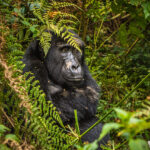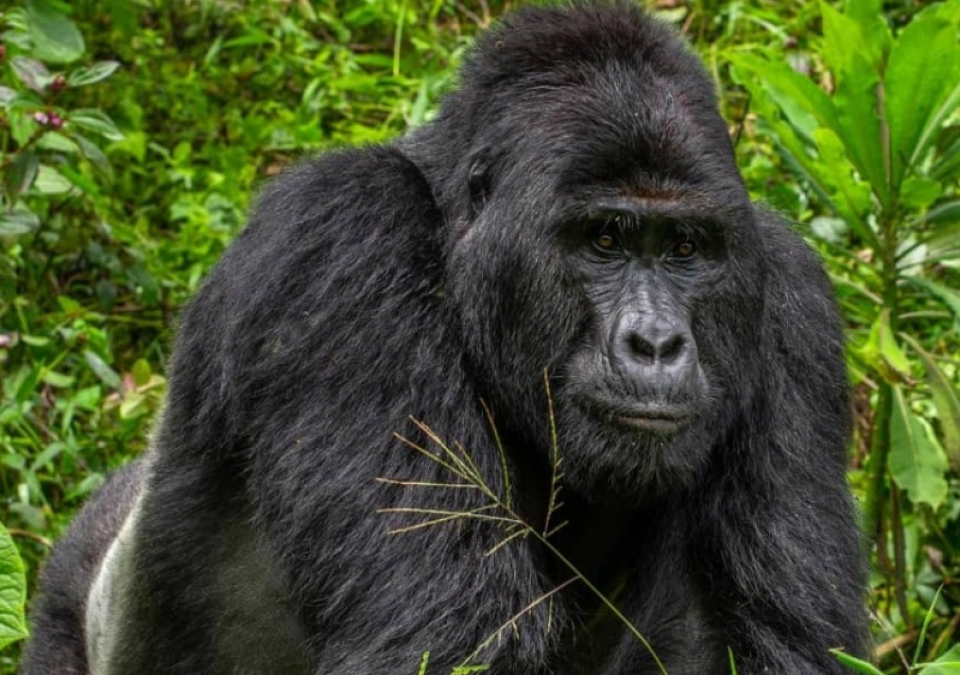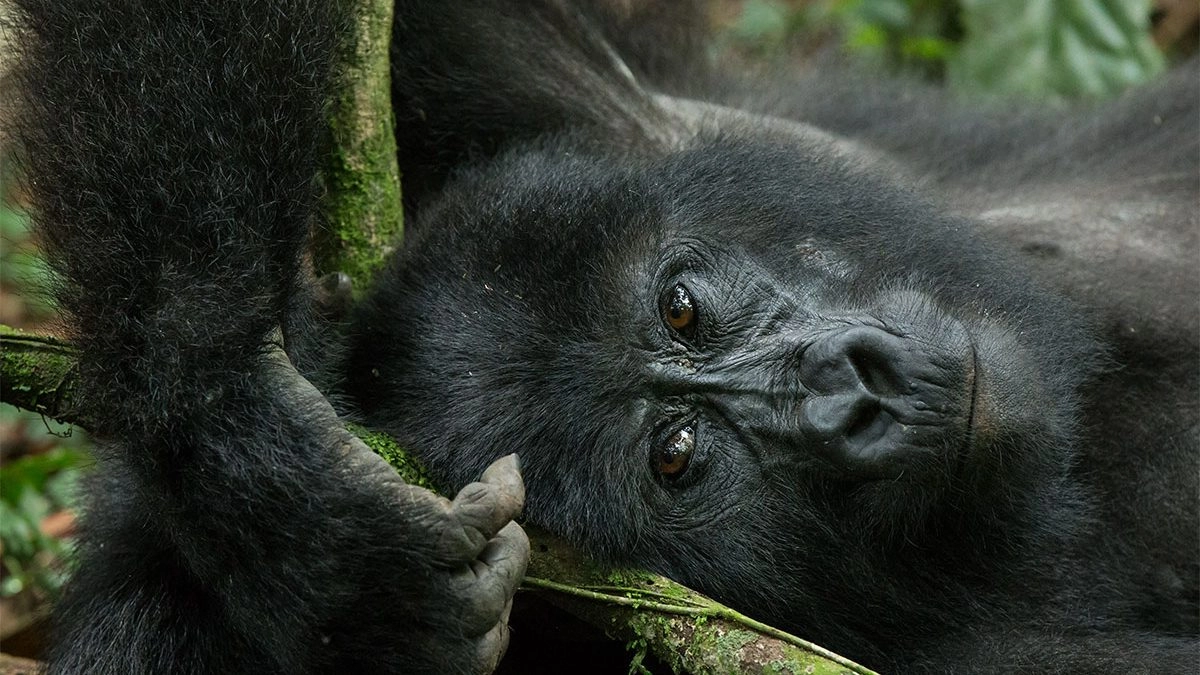
Is It Possible to Do Gorilla Trekking from Ireland in Uganda Via Kigali Rwanda?
September 5, 2025
Why Lake Nakuru National Park Is a Must-Visit on Your Kenya Wildlife Safari Lake Nakuru National Park in Kenya has earned global acclaim as a birdwatcher’s paradise and a must-visit destination for Kenya Wildlife Safaris. Travelers often ask, Why is Lake Nakuru essential for a Kenya Safari? The answer lies in its extraordinary biodiversity, scenic landscapes, and unique wildlife, making it a favorite stop for both avid birdwatchers and general wildlife enthusiasts. The park sits in the heart of the Great Rift Valley, providing a mix of lake, woodland, and grassland habitats. This diverse environment supports over 450 recorded bird species, including the historically famous pink flamingos, whose vibrant congregations once turned the lake into a shimmering pink spectacle. Lake Nakuru is also home to endangered species such as the eastern black rhino and southern white rhino, as well as lions, giraffes, hippos, and countless antelopes. For travelers planning a Kenya Wildlife Safari, Lake Nakuru offers a unique combination of avian diversity, rich wildlife, and accessible landscapes. Visitors can enjoy game drives, birdwatching excursions, and cultural interactions with local communities near the park, creating an unforgettable and authentic safari experience. A World-Renowned Birdwatching Destination What Makes Lake Nakuru Special for Bird Enthusiasts? Many ask, Why is Lake Nakuru considered a top birdwatching destination in Kenya? The park supports over 450 bird species, ranging from small passerines to majestic raptors, making it one of the richest avian habitats in Africa. Seasonal migrations bring additional species, ensuring that every visit offers new and exciting sightings. Historically, the park became globally famous for its massive flamingo populations. At their peak, millions of lesser and greater flamingos would gather along the lake’s alkaline shores, creating a breathtaking pink vista. While flamingo numbers fluctuate due to environmental factors and water levels, sightings of hundreds or thousands of birds remain common. Birdwatchers can also enjoy rare species like pelicans, African fish eagles, and kingfishers, making Lake Nakuru a must-visit for Kenya Wildlife Tours and specialized birdwatching safaris. Beyond birds, the lake’s shorelines and surrounding vegetation attract various mammals, providing a unique opportunity to combine birdwatching with traditional wildlife viewing on a single Kenya Safari. This convergence of habitats and species makes Lake Nakuru an exceptional choice for both family safaris and wildlife photography enthusiasts. Diverse Habitats Support Incredible Wildlife How Do the Park’s Habitats Enhance Your Safari Experience? Lake Nakuru National Park is more than just a birdwatching hotspot; it offers a mix of habitats that support Kenya’s rich biodiversity. Travelers often ask, What wildlife can I expect in addition to birds? The lake’s alkaline waters sustain flamingos and pelicans, while the surrounding grasslands, acacia woodlands, and rocky ridges host giraffes, zebras, elands, and numerous antelope species. The park is particularly notable for protecting endangered rhinos. Visitors frequently encounter both eastern black rhinos and southern white rhinos, offering rare and memorable wildlife encounters. Lions, leopards, and hyenas also roam the park, and hippos are often spotted near the lake’s edges. This diverse array of habitats allows travelers to enjoy Kenya Wildlife Safaris that combine big game viewing with birdwatching, ensuring an engaging and educational experience for all ages. The mix of landscapes also creates spectacular photography opportunities. Sunrises and sunsets over the lake, with flamingos in the foreground and acacia trees silhouetted against colorful skies, provide unforgettable imagery. Birdwatchers, wildlife photographers, and safari enthusiasts all benefit from Lake Nakuru’s unique combination of scenic beauty and ecological richness. Iconic Flamingos: A Symbol of Lake Nakuru Why Are Flamingos a Major Attraction? Visitors often ask, Are the flamingos at Lake Nakuru still worth seeing? Absolutely. Though numbers vary due to changing water levels and environmental conditions, flamingos remain an iconic feature of the park. Lesser flamingos feed on the lake’s cyanobacteria, while greater flamingos prefer invertebrates, creating a dynamic ecosystem and stunning visual display. The sight of even hundreds of flamingos gathering in shallow waters provides dramatic photographic and wildlife observation opportunities. Many safari itineraries schedule early morning visits to capture the flamingos in soft light, often paired with sightings of other waterbirds, hippos, and occasionally lions hunting along the lake margins. For travelers planning a Kenya Wildlife Safari, this combination of aquatic and terrestrial wildlife creates a uniquely immersive experience. Flamingos also play a crucial ecological role, serving as indicators of the lake’s health and supporting tourism awareness of conservation issues. Observing these elegant birds helps visitors understand the delicate balance between wildlife and habitat management in Kenyan parks. Safari Activities at Lake Nakuru What Experiences Should You Include on Your Kenya Safari? Lake Nakuru National Park offers a wide array of activities to suit both wildlife enthusiasts and family travelers. Game drives are the highlight, allowing visitors to spot rhinos, giraffes, zebras, lions, and other mammals while enjoying expert commentary from knowledgeable guides. Early morning and late afternoon drives are particularly rewarding for photography due to optimal lighting. Birdwatching excursions are tailored for enthusiasts of all levels, with opportunities to observe flamingos, pelicans, herons, and migratory species. Lodges often provide binoculars and guidebooks to enhance the experience. For families, cultural visits to nearby communities introduce traditional practices, crafts, and Maasai or local Swahili culture, creating a balanced safari itinerary that combines nature and heritage. Nature walks along designated trails near the lake provide additional insight into the ecosystem, including flora, insect life, and smaller mammals. Many visitors also enjoy sunset viewing points, which offer panoramic vistas over the lake and surrounding savannah. These diverse activities ensure that Lake Nakuru is not only a highlight of Kenya Wildlife Safaris but also a comprehensive safari destination catering to wildlife lovers, birdwatchers, and families alike. Best Time to Visit Lake Nakuru When Should You Plan Your Kenya Wildlife Safari? The optimal time to visit Lake Nakuru depends on the experience desired. Travelers often ask, When is the best season to see birds and other wildlife? The dry season, from June to October, concentrates wildlife around water sources, making game drives highly productive. Bird activity remains high, and flamingo sightings are often dramatic during this period. The wet season, from March to May, transforms the park into lush greenery, supporting calving herds and attracting migratory birds. While some roads may be difficult, the verdant scenery and fewer crowds provide a quieter, more intimate safari experience. Planning visits according to seasonal highlights ensures that every Kenya Wildlife Safari offers both wildlife diversity and scenic beauty. Combining visits to Lake Nakuru with nearby parks like Lake Naivasha or the Maasai Mara creates a comprehensive Kenya Tour, allowing travelers to witness Kenya’s incredible biodiversity, from flamingos and rhinos to elephants and lions, all within a single safari itinerary. Lake Nakuru as a Key Stop on Kenya Wildlife Safaris Lake Nakuru National Park remains a cornerstone of Kenya Wildlife Safaris, offering unmatched birdwatching opportunities, iconic flamingos, endangered rhinos, and diverse habitats for a complete wildlife experience. Its scenic landscapes, cultural interactions, and accessible facilities make it ideal for families, photographers, and conservation-minded travelers. Whether visiting for the vibrant flamingos, the elusive rhinos, or the over 450 bird species, Lake Nakuru offers an immersive Kenya Wildlife Tour experience that blends adventure, education, and visual splendor. Partnering with Ovacado Adventures ensures expertly guided safaris, culturally enriching excursions, and a carefully tailored itinerary that highlights the park’s unique offerings. For travelers seeking a memorable and authoritative safari destination, Lake Nakuru National Park is undeniably one of the Best Kenya Safaris available.
September 11, 2025Rwanda Gorilla Trekking from Korea
Why Rwanda Gorilla Trekking from Korea is Worth Planning?
Rwanda Gorilla Trekking from Korea has become a dream safari adventure for travelers who wish to encounter the world’s endangered mountain gorillas in their natural habitat. Flying from South Korea to Rwanda requires time and preparation, yet the reward of trekking in the lush forests of Volcanoes National Park makes every step worthwhile. The journey combines long-haul international flights, the acquisition of a gorilla trekking permit, and the support of an experienced safari operator who ensures your holiday runs smoothly. For many travelers from Korea, this adventure is more than just a wildlife safari—it is an immersive cultural and natural experience that connects them deeply with Africa’s biodiversity.
Mountain gorilla trekking stands as one of the most extraordinary wildlife activities in the world, and Rwanda has positioned itself as a premier destination for this once-in-a-lifetime encounter. Beyond the one-hour gorilla experience, visitors also enjoy breathtaking views of the Virunga Volcanoes, cultural tours with local communities, and opportunities to explore Kigali city before or after the safari. Travelers from Korea often combine gorilla trekking with other East African adventures such as Uganda Gorilla Trekking, Uganda Wildlife Safaris, or multi-country tours across Kenya and Tanzania. By working with Ovacado Adventures, every traveler receives personalized guidance, from booking flights and gorilla permits to selecting safari lodges and adding cultural excursions.
This guide breaks down everything a traveler from Korea should know—from flight routes and permit costs to safari lodges and cultural highlights.
Booking Flights – How to Travel from Korea to Rwanda for Gorilla Trekking
Travelers planning Rwanda Gorilla Trekking from Korea begin with international flights into Kigali International Airport (KGL), the main entry point to Rwanda. Direct flights from Seoul or Busan are not available; therefore, travelers must connect through major international hubs such as Doha (Qatar Airways), Istanbul (Turkish Airlines), or Addis Ababa (Ethiopian Airlines). Depending on the route and airline, the total travel time usually ranges from 15 to 20 hours or more. Although lengthy, these flights provide comfort options, from economy to business class, enabling travelers to arrive in Rwanda well-prepared for their safari holiday.
Booking early ensures better fares, and most safari experts recommend scheduling flights after confirming gorilla permits to avoid any mismatches in timing. Many visitors choose to spend a night in Kigali after arrival before starting their journey to Volcanoes National Park, located about 2.5 hours away by road. Kigali offers modern hotels, vibrant markets, and cultural attractions, including the Kigali Genocide Memorial, which gives visitors a deeper understanding of Rwanda’s history. For Korean travelers with extended holidays, Rwanda can also serve as a gateway to Uganda Tours or Uganda Safaris, since cross-border connections are easy and allow multi-destination experiences.
Would it be possible to shorten your safari journey by entering Uganda through Kigali instead of Entebbe? Yes, travelers often choose this option because it reduces driving hours and makes itineraries more flexible.
Securing a Gorilla Permit – The Key Step for Rwanda Gorilla Trekking from Korea
Every traveler planning Rwanda Gorilla Trekking from Korea must secure a gorilla trekking permit, which grants access to Volcanoes National Park. The Rwanda Development Board currently prices these permits at USD 1,500 per person for international visitors. This cost may appear high, yet it directly supports gorilla conservation and ensures communities around the park benefit from tourism.
Since gorilla trekking permits are limited daily, early booking is essential. Travelers from Korea should reserve their permits months in advance, particularly if visiting during peak seasons such as June to September or December to February. Working with Ovacado Adventures guarantees that permits are secured alongside all safari arrangements, preventing last-minute disappointments.
Why is the gorilla permit so important? Without it, one cannot access the trekking areas or visit a gorilla family. The permit also covers the services of professional rangers and trackers who lead the trek through dense rainforests until the gorillas are located. Trekking can last between one and six hours, depending on the gorillas’ movements, but the experience culminates in an unforgettable one-hour encounter. Travelers spend this time observing the gorillas’ social interactions, watching playful juveniles, and admiring the majestic silverbacks.
Does the Rwanda permit compare to a Uganda Gorilla Safari experience? Yes, but Uganda’s permits cost USD 800 per person, offering a more affordable alternative for travelers who prefer longer safari holidays combined with Uganda Wildlife Tours or Uganda Holidays.
Choosing a Safari Package – Tailored Options for Korean Travelers
When planning Rwanda Gorilla Trekking from Korea, booking a safari package through a reputable local operator ensures a stress-free experience. Ovacado Adventures specializes in customized itineraries that combine gorilla trekking with Rwanda’s cultural tours, nature walks, and scenic explorations. Packages often include permit fees, transportation, accommodation, meals, and professional guides.
Travelers can select between budget, mid-range, and luxury safari lodges near Volcanoes National Park. Budget-friendly options provide comfortable stays with local charm, while luxury lodges offer world-class service, fine dining, and breathtaking views of the Virunga Volcanoes. Mid-range options balance comfort and affordability, making them ideal for most travelers. Korean visitors often appreciate lodge experiences that allow immersion in Rwanda’s culture, such as traditional dance performances, storytelling sessions, and visits to nearby artisan villages.
Why book a safari package instead of organizing independently? Packages save time, reduce costs from unexpected expenses, and ensure seamless coordination. Travelers from Korea can also combine Rwanda gorilla trekking with Uganda Safaris Holidays, including wildlife adventures in Queen Elizabeth National Park or cultural tours around Lake Bunyonyi. Such extensions provide a deeper East African safari experience that goes beyond gorillas.
For travelers asking: “Can I experience both Rwanda Gorilla Trekking and Uganda Wildlife Safari in one holiday?” The answer is yes, and it is a highly rewarding combination.
Preparing for the Trek – Essential Gear and Fitness Tips
Rwanda Gorilla Trekking from Korea requires proper preparation because the trek involves hiking through dense forests, steep slopes, and sometimes muddy terrain. Travelers must be physically fit to endure hikes lasting several hours. Basic fitness training before departure, such as walking, jogging, or stair climbing, greatly improves endurance.
Packing the right gear is equally important. Essential items include sturdy hiking boots, rain jackets, gloves, long-sleeved shirts, and long trousers to protect against nettles and insects. A hat, sunscreen, insect repellent, and a refillable water bottle should also be included. Lightweight snacks help maintain energy levels during the trek, while walking sticks (provided at the park) offer additional support. Masks are mandatory to protect gorillas from potential human-transmitted diseases, and hand sanitizers should be carried for hygiene.
Would travelers from Korea need porters during the trek? Yes, porters are available for hire and provide valuable assistance with carrying bags, giving trekkers more energy for the hike itself. Supporting local porters also contributes directly to community livelihoods.
Is gorilla trekking safe for Korean travelers? Absolutely, because treks are led by armed rangers and professional guides who ensure visitor safety while maintaining conservation rules.
Experiencing Gorilla Trekking – The Highlight of Rwanda Safaris
The heart of Rwanda Gorilla Trekking from Korea lies in the unforgettable moment of meeting a gorilla family in Volcanoes National Park. Early morning briefings prepare trekkers for the hike, followed by small group departures led by park rangers. The hike passes through thick vegetation, bamboo forests, and hilly terrain until trackers locate the gorillas.
When the gorillas are found, visitors are allowed one hour of close observation. This magical encounter is emotional, humbling, and unforgettable. Watching a silverback lead his family, mothers nurse infants, or youngsters climb trees creates memories that last a lifetime. Photography is allowed without flash, enabling visitors to capture priceless moments while respecting the gorillas’ natural behavior.
Many travelers from Korea describe this experience as transformative because it fosters a deeper appreciation of conservation. The strict trekking rules protect the gorillas and ensure sustainable tourism. After the trek, travelers often return to their lodges for cultural experiences, such as traditional Rwandan cuisine, drumming performances, or storytelling evenings.
Could this experience be combined with Uganda Gorilla Safaris? Yes, travelers can cross into Uganda for treks in Bwindi Impenetrable National Park, creating a multi-destination holiday with different gorilla families.
Cultural Experiences Around Volcanoes National Park Lodges
Beyond gorilla trekking, Rwanda offers cultural richness that enhances safari holidays. Lodges around Volcanoes National Park often collaborate with nearby communities, allowing visitors from Korea to enjoy authentic cultural encounters.
One highlight is visiting the Iby’Iwacu Cultural Village, where travelers interact with locals through music, dance, and traditional ceremonies. Guests may also explore artisan markets showcasing crafts, baskets, and woodcarvings, perfect souvenirs to take home. Culinary experiences introduce travelers to Rwandan dishes such as ugali, brochettes, and plantain-based meals.
Would cultural activities enrich Rwanda Gorilla Trekking from Korea? Absolutely, because they connect travelers to Rwanda’s people and traditions. Engaging with communities creates meaningful safari holidays that combine wildlife encounters with human stories. Additionally, cultural tours generate income for local families, reinforcing the sustainability of gorilla tourism.
Why Rwanda Gorilla Trekking from Korea is the Safari of a Lifetime
Rwanda Gorilla Trekking from Korea provides an unmatched safari adventure that blends long-haul travel with rare wildlife encounters and vibrant cultural experiences. Although planning requires effort, every step leads to a rewarding journey into the heart of Africa. From booking international flights, securing gorilla permits, and preparing for the trek to experiencing gorillas face-to-face, this adventure is truly life-changing.
Ovacado Adventures stands ready to guide travelers from Korea at every stage, ensuring expert advice, reliable logistics, and unforgettable experiences. For travelers asking questions like, “Can I combine Uganda Gorilla Trekking with a Uganda Wildlife Safari?” or “Is it possible to extend Rwanda Gorilla Trekking with Uganda Tours?” the answer is always yes. East Africa offers diverse safari opportunities, and combining countries creates richer safari holidays.
By choosing Rwanda Gorilla Trekking from Korea, travelers gain not only memories of mountain gorillas but also stories of Rwanda’s culture, landscapes, and resilience. This experience cements Africa as one of the most inspiring destinations in the world.



